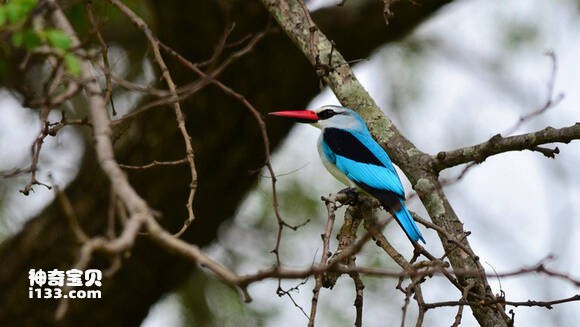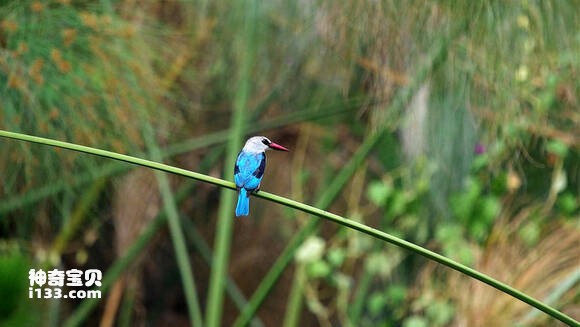Halcyon senegalensis
IUCN
LCBasic Information
Scientific classification
- name:Halcyon senegalensis
- Scientific Name:Halcyon senegalensis,Woodland Kingfisher,Senegal Kingfisher
- Outline:Climbing birds
- Family:
Vital signs
- length:About 21 cm
- Weight:No textual research information is available
- lifetime:No textual research information is available
Feature
Distribution and Habitat
Woodland jadeite is found in central and southern Africa (including the southern Arabian Peninsula and the entire African continent south of the Sahara Desert (Tropic of Cancer).)
Woodland jadeite usually inhabits dense forests and riverbanks near water, on the edges of savanna woodlands, rivers, lakes, or mangroves.
Appearance
The woodland emerald is a medium-sized kingfisher with a length of 21cm. The head and neck are gray-blue. The shoulder blade and primary feathers are black to form a boundary. The tail feathers are blue. The whole upper body is different from other African species, with a grey throat and a small group of black and white tail horses. Mouth color: The upper part is red, while the lower jaw is black. Feet are grayish brown, irises brown. Eye stripe black.
The mouth is thick and long like a chisel, the base is wider, the mouth peak is straight, the peak ridge is round, there is no nasal groove on both sides; Wing circle, the first primary feather is equal or slightly shorter than the seventh primary feather, and the second, third, and fourth are nearly equal in length; Primary feather base with white spots; The tail is round.
Details
Halcyon senegalensis, Woodland Kingfisher, Senegal Kingfisher, There are three subspecies (1.Halcyon senegalensis senegalensis is found in Kenya, Tanzania, Rwanda, Burundi, and Ethiopia. 2.Halcyon senegalensis fuscopilea is distributed in Nigeria, Congo Basin, Sierra Leone. 3.Halcyon senegalensis cyanoleuca is found in Angola, Botswana, South Africa, and Tanzania.) .

Woodland jadeites stand motionless among trees in direct sunlight, however, they are active in wet weather and on cloudy days. This is a unique bird that tends to make a rapid, repetitive trill during the breeding season. Forest jadeite is migratory in Africa. This species is located north and south of the equator and varies seasonally. Migration usually takes place at night, alone or in small groups。

Woodland jadeite generally hunts alone or in pairs. Like most forest kingfishers, they are completely carnivorous. Often searching for prey in leaves or dirt. The main diet is invertebrates such as crickets, spiders, scorpions, and snails. They also eat small vertebrates, such as small fish, snakes and lizards.

The woodland emerald spawning season is from October to January in Northern Rhodesia and extends from November to February in the Transvaal. The nest is built on the earth cliff or on the embankment of the river, and the nest is dug in the tunnel type cave with the mouth, which is 60 cm deep, 20 cm wide, 10 cm high and long. These caves are generally bare of bedding. The eggs are laid directly on the nest ground. The female lays 3-4 eggs at a time. Eggs are nearly round, pure white.
Listed on the International Union for Conservation of Nature (IUCN) Red List Protection Level: Not Threatened (LC).
Protect wild animals and eliminate wild meat.
Maintaining ecological balance is everyone's responsibility!








